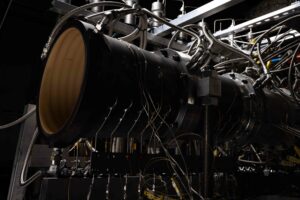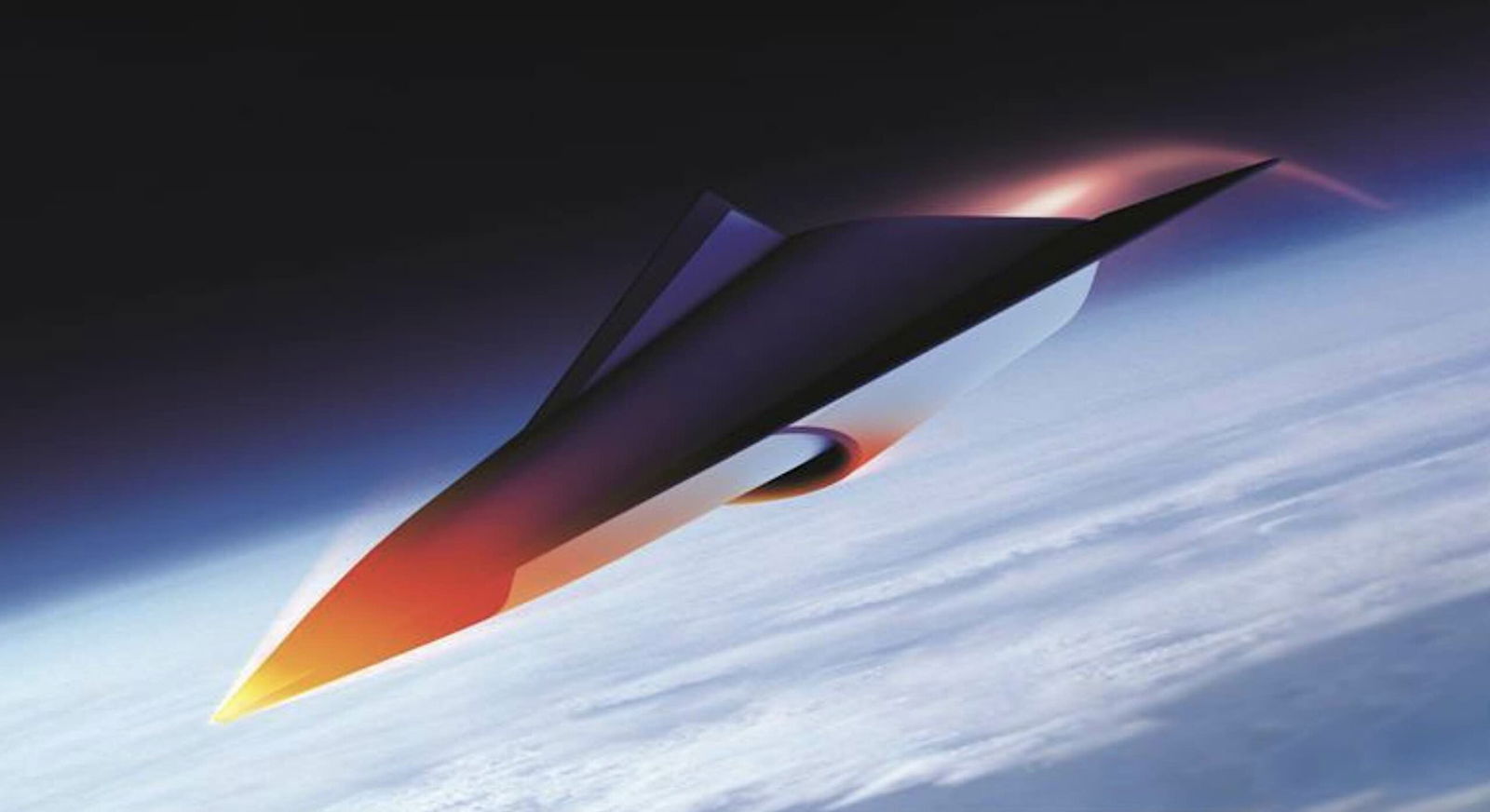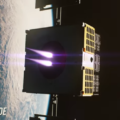A team of advanced propulsion researchers working at GE Aerospace’s Global Research Center in Niskayuna, New York, says it has successfully tested its new dual-mode hypersonic ramjet engine.
After moving from design to testing in less than 11 months, the cutting-edge engine is expected to dramatically increase the thrust and range of hypersonic aerospace platforms, including missiles and aircraft, for military and commercial applications.
“The rapid progression from design to testing underscores our commitment to driving innovation in hypersonic technologies,” said Amy Gowder, president and CEO of Defense & Systems at GE Aerospace, in a statement. “This milestone not only shows the exceptional talent and dedication of our team but also reaffirms our position as a leader in the pursuit of hypersonic flight.”
Dual-Mode Hypersonic Ramjet Combines Multiple Technologies
Normally, a ramjet engine takes advantage of the high-speed flow of air entering the front of the engine to generate large amounts of thrust in an environment where typical turbofan engines cannot. Ramjets that operate above the speed of sound, meaning at supersonic speeds, are sometimes referred to as scramjets.
The newly tested GE Aerospace dual-mode hypersonic ramjet system combines this technology class with an advanced form of power generation known as rotating detonation combustion (RDC). In previous research, RDC engines have proven to be a good match with supersonic and hypersonic concepts due to the fact that combustion in an RDC is accomplished using detonation waves as opposed to methods used in conventional aircraft engines. In theory, combining these technologies could generate thrust at speeds reaching or even exceeding Mach 5, or approximately 4,000 miles per hour. Engineers refer to speeds above this threshold as hypersonic.
Previous efforts to design and build a ramjet that can operate at both supersonic and hypersonic speeds have met significant engineering hurdles. For example, a normal air-breathing dual-mode ramjet can only operate efficiently at speeds above Mach 3. Fortunately, the engineers at GE Aerospace have been working on RDC engines for years and have experimented with their operation under a number of challenging conditions. This latest dual-mode engine takes advantage of the lessons learned during that work, offering it the potential to operate at lower speeds than Mach 3 and at higher speeds than Mach 5.
Over the last decade, the company has also been working on other areas supporting the advancement of high-speed flight, including the testing and development of high-temperature materials and high-temperature electronics that can withstand the harsh environment of hypersonic travel. According to industry experts, this work includes advancements in high-temperature ceramic matrix composites, silicon carbide power electronics, fuel additive technologies, and other areas related to successful operation at high-temperature conditions.
“The highly successful demonstration of a DMRJ with RDC is an outgrowth of our more than 10 years of RDC work, including the strategic acquisition of Innoveering that has brought leading technologies and experience in hypersonic propulsion and ramjets,” explained Gowder, noting the company’s2022 acquisition of high-speed propulsion and hypersonic engineering firm, Innoveering.
Tests Show a Three-Fold Increase in Airflow
The latest tests, which started in March after only 11 months into the engine’s design phase, took place at the company’s clean air, continuous flow, high-speed propulsion testing facility in Evendale, OH. During those tests, the new dual-mode ramjet was put on a rig and evaluated in a number of simulated supersonic airflow environments.
According to the company, all of the tests were successful and functioned as expected. Of significant note was the engine’s airflow performance, which the company says was dramatically higher than previously tested ramjet engines.
“The testing delivered promising results,” GE Aerospace explained, “exceeding performance expectations and demonstrating robust operation of a dual-mode ramjet with a threefold (3X) increase in airflow compared to previously flight-tested hypersonic technology demonstrators.”


More Testing and Development of Cutting-Edge Engine Planned
According to Mark Rettig, vice president, and general manager of Edison Works Business and Technology Development, GE Aerospace, “The successful development, integration, and demonstration of GE’s technologies and capabilities will position us to provide differentiating hypersonic propulsion systems for our customers now and well into the future.”
“We have assembled the right expertise, with the right capabilities, and invested strategically to ensure we are aligned very closely with the needs of our customers,” Rettig added. “The significant results we have had to date give us confidence that we are moving in the right direction.”
Moving forward, the team behind the new dual-mode ramjet says they are working to lower the engine’s operation speed while also improving the RDC/Ramjet efficiency.
“The technology’s robust performance paves the way for the next phase of development,” Rettig said, “which will focus on continued testing and technology demonstration in alignment with our roadmap for integrated high-speed propulsion solutions.”
Christopher Plain is a Science Fiction and Fantasy novelist and Head Science Writer at The Debrief. Follow and connect with him on X, learn about his books at plainfiction.com, or email him directly at christopher@thedebrief.org.

